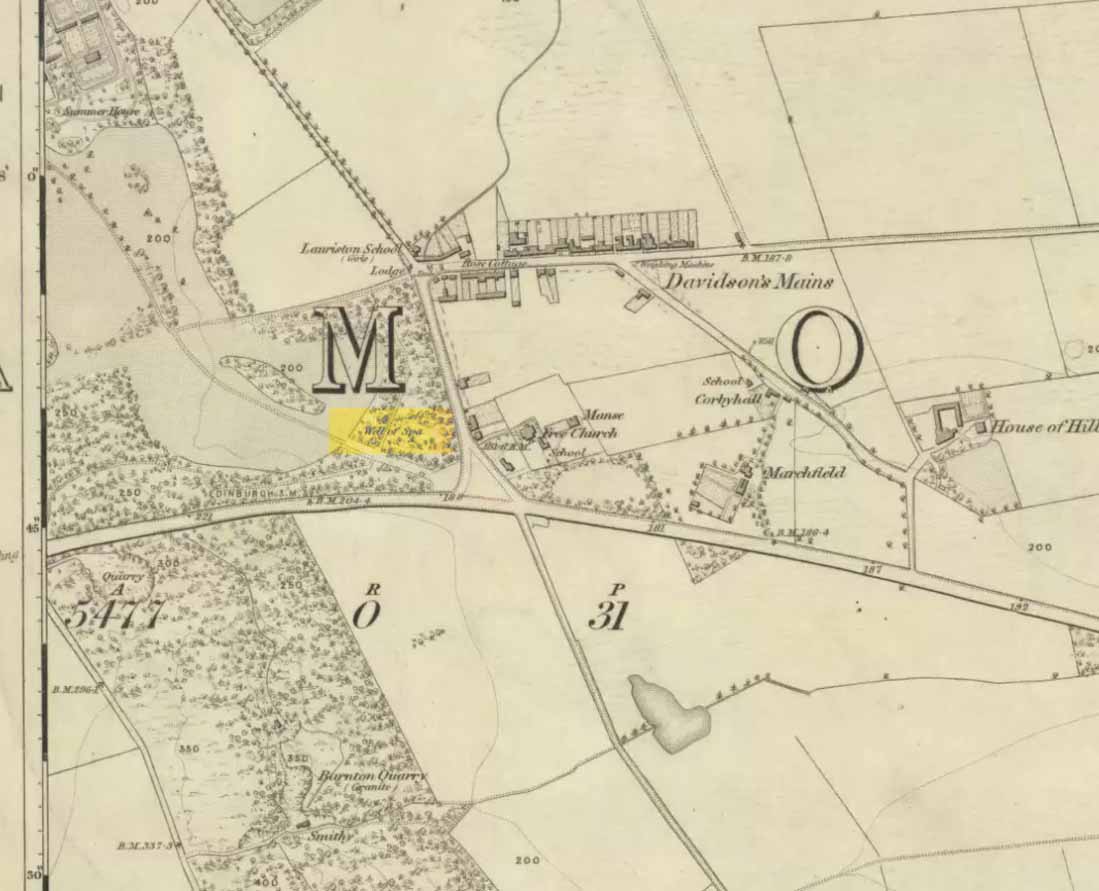Healing Well: OS Grid Reference – NT 2049 7524
Also Known as:
- Spaw Well
- Well of Spaw
Getting Here

From the west end of Prince Street in Edinburgh central, take the (A90) Queensferry Road. Go along here for 2.2 miles (3.5km) where the A90 meets the A902. Keep going west along Hillhouse Road for literally 1km (0.62 miles) where you reach a crossroads with the B9085 and there are trees on the right (north) side of the road. Go into these trees and, before you come out into the fields on the other side, about 150 yards in, walk to your right and zigzag about in the undergrowth. A small muddy pond is what you’re looking for!
Archaeology & History
Out towards old Lauriston Castle on the northwestern outskirts of the city, these all-but forgotten healing waters became renowned for a short period of time in the latter-half of the 18th century. They were described in John Law’s Parish of Cramond (1794) where, with some brevity, he told that,
“On the lands of Marchfield is a spring of mineral water called the well of Spaw, reckoned beneficial in scorbutic cases, and highly purgative if drunk copiously.”
It was highlighted in the trees on the earliest OS-map (above) and its ruined remains can still be found. Stone-lined, the watery remains of this old healing well (undoubtedly a place used by local people before the toffs named it as a ‘spa’) are thankfully still running. Two other spa wells could be found not far away: one at Lauriston castle, and the other at Barnton.
References:
- Bennett, Paul, Ancient and Holy Wells of Edinburgh, TNA: Alva 2017.
- Campbell, B.,”Some Notes on the Antiquities and Natural History of Cramond,” in Transactions of the Edinburgh Field Naturalists, volume 5, 1907.
- Geddie, John, The Fringes of Edinburgh, W. & R. Chambers: London 1926.
- Law, John, The Antient and Modern State of the Parish of Cramond, John Paterson: Edinburgh 1794.
© Paul Bennett, The Northern Antiquarian
The map could not be loaded. Please contact the site owner.